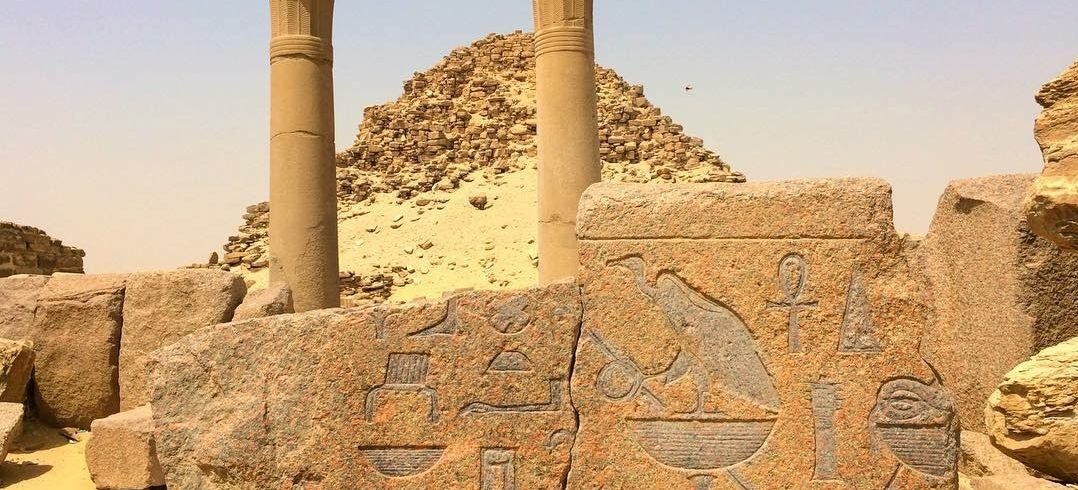Abu Sir
DESPITE BEING OPEN TO THE PUBLIC ONLY SINCE THE MID 1990, Abu Sir has long been known to the most casual of Egyptologists as the place of discovery of a cache of important papyri unearthed in the last years of the 19th century. More recently, in February 1998, a team of archaeologists chanced upon the rare find of an undisturbed ancient Egyptian burial, putting Abu Sir back in the limelight once again.
Located several miles south of Giza, Abu Sir is marked by a cluster of three pyramids belonging to little known kings and queens from the 5th dynasty (2494-2345 B.C.). All are considerably smaller than even the smallest of the three Pyramids of Giza. They are also quite dilapidated, giving them a slumped appearance. What makes the site charming is its isolated setting on a sandy ridge, where the desert rises away from the palm groves of the Nile plain. Few visitors come here. Abu Sir marks the continuation of a trend begun with the Pyramid of Menkaura at Giza; as the pyramids decrease in size, their accommids Panying temple complexes become proportionately larger, with a greater emphasis on decoration. At Abu Sir, the remains of the various mortuary and valley temples are by far the most interesting elements of the site Northernmost of the group,
The Pyramid of Sahure (R 2487-2475) is the only one it is possible to enter-via a descending passage that is terrifyingly constricted and leads only to a single, small burial chamber. On the east side of the pyramid are the remains of Sahure’s mortuary temple. Some of the walls have been reconstructed up to a height of about 18 inches (0.5 m) which is enough to give some indication the floor plan. Reliefs decorate much of the wall surfaces 8“ included scenes depicting the pharaoh’s victories over a Libyan army. Most of these reliefs are now in the Egyptian Museum in Cairo, but a few fragments remain in situ, making the area worth exploring. King Sahure was succeeded by his brother Neferirkare (R24752455 B.C.), whose pyramid is the southernmost and largest of the trio. Unfinished at the time of the pharaoh’s death, its outer sheathing was hastily completed with perish able mud brick hall has eroded, revealing a six-stepped stone inner core similar to Djoscr’s pyramid at Saqqara (sec pp. 148-150). It is in Neferirkare’s mortuary temple, 0n the east side of the pyramid, that a celebrated set of papyri was discovered. When deciphered, the expressive pictograms (written in hieratic, a shorthand form of hieroglyphics) revealed themselves to include priestly schedules, inventories of furniture and equipment, and accounts. Taken together, these offer a fascinating insight into the day-to-day administration of the Abu Sir temples of 4,000 years ago. Much is still to be learned from the papyri, which are being studied at the British Museum in London. The third, and most dilapidated, of the pyramid trio was built for Nyuserra (R.2445-2421), son of Neferirkare. His desire to nestle his funerary monument between those of his father and his uncle has limited the size of the pyramid.

